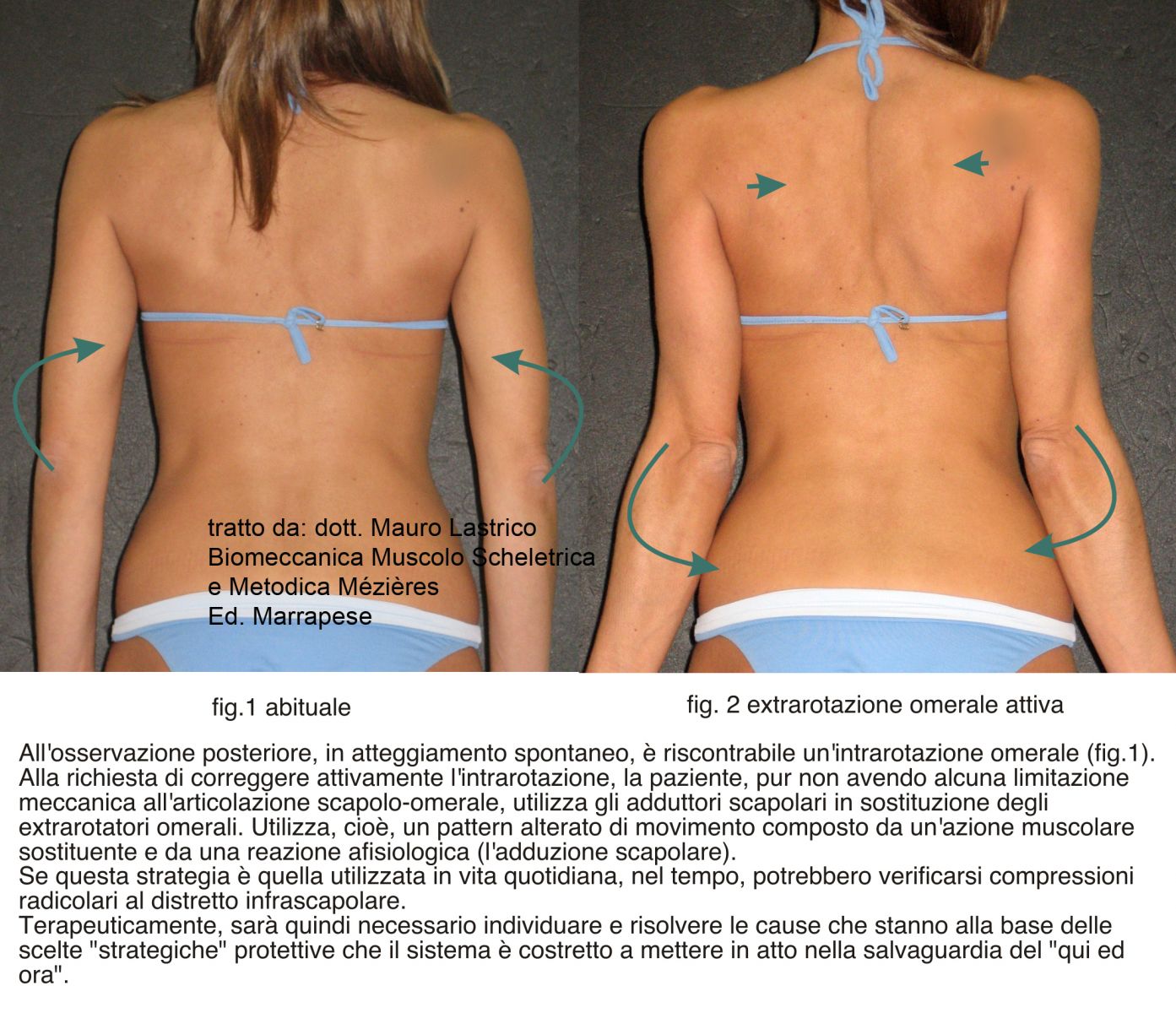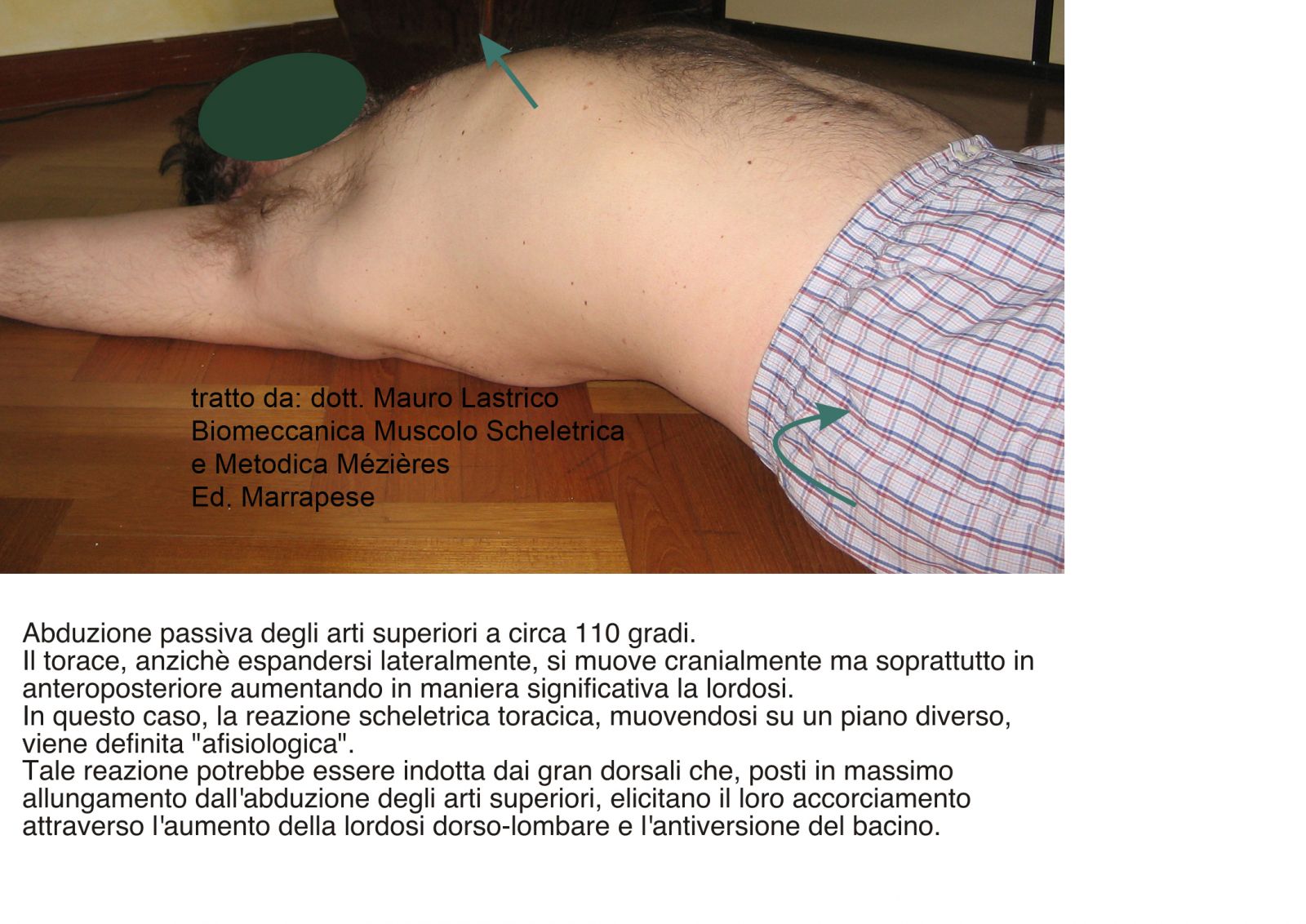Biomechanics of Dynamic Muscle Analysis
Dr. Mauro Lastrico
Extract from:
"Musculoskeletal Biomechanics and Mézières Methodology"
Author: Dr. Mauro Lastrico
Marrapese Publisher
Dynamic observations will include both active movements performed by the patient and passive movements performed by the operator.
Active dynamic observations aim to detect whether the actions performed by the patient are executed by the anatomically designated muscles or if there are substitutive moments, pathological reactions, and excessive physiological reactions.

Passive dynamic observations aim to detect abnormal musculoskeletal relationships distinguished into:
* pathological reactions, i.e., skeletal reactions that occur in a manner incongruent with the induced movement. For example, during passive abduction of an upper limb, the physiological reaction is ipsilateral lateral expansion of the thorax, whereas the pathological reaction is the absence of ipsilateral lateral expansion of the thorax associated with any other skeletal movement.

* abnormal physiological reactions in quantity, either excessive or diminished, i.e., reactions that occur with congruent movement direction but expressed in incorrect quantities.

Copyright © 2025 AIFiMM Formazione Mézières Provider E.C.M. n. 1701. All rights reserved.



